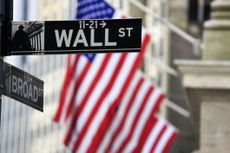ETFs
The latest news, updates and opinions on ETFS from the expert team here at MoneyWeek
-

Investors should plan for an age of uncertainty and upheaval
Tectonic geopolitical and economic shifts are underway. Investors need to consider a range of tools when positioning portfolios to accommodate these changes
By James Proudlock Published
-

How to invest in undervalued gold miners
The surge in gold and other precious metals has transformed the economics of the companies that mine them. Investors should cash in, says Rupert Hargreaves
By Rupert Hargreaves Published
-

Rob Granieri: the mysterious billionaire boss of Jane Street
Profits at Jane Street have exploded, throwing billionaire Rob Granieri into the limelight. But it’s not just the firm’s success that is prompting scrutiny
By Jane Lewis Published
-

Beware the bubble in bitcoin treasury companies
Bitcoin treasury companies are no longer coining it. Short this one, says Matthew Partridge
By Dr Matthew Partridge Published
-

Alok Sama on AI and investing in the future of technology
Interview Alok Sama, the former president and chief financial officer of Masayoshi Son’s investment vehicle SoftBank Group International, explains AI’s potential
By Dr Matthew Partridge Published
Interview -

The challenge with currency hedging
A weaker dollar will make currency hedges more appealing, but volatile rates may complicate the results
By Cris Sholto Heaton Published
-

Bitcoin 'has become the reserve asset of the internet'
Opinion The cryptocurrency has established itself as the electronic version of gold, says ByteTree’s Charlie Morris
By Charlie Morris Published
Opinion -

European bank stocks bounce back
Opinion European bank stocks were part casualty and part cause of Europe’s lost decade. Now it’s clearly turned the corner, says Cris Sholto Heaton
By Cris Sholto Heaton Published
Opinion -

How to invest in the travel industry's boom
The travel industry is in rude health despite uncertainty about the global economy, Trump’s policies and geopolitical concerns. Investors should buy in now
By Dr Matthew Partridge Published
